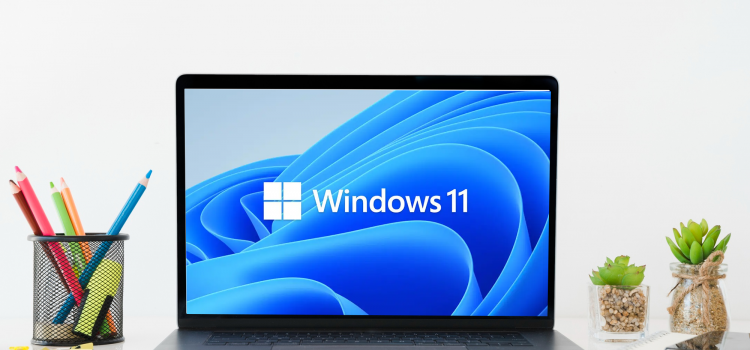










Do you wish to install Windows 11 on unsupported hardware? Read along.
Microsoft caused a ruckus in the Windows community when they released the pc requirements for Windows 11. I think it is a big consensus that the specifications are too strict and therefore eliminate a lot of old PC which are still capable of running Windows 11. The requirement of the TPM 2.0 is the biggest problem Windows 11 poses for older PCs. The Trusted Platform Module (TPM) was upgraded to 2.0 in 2014, and so PCs developed from 2015 onwards will be compatible with Windows 11.
Despite all that, a workaround to install Windows 11 on supported PCs was released a few months ago. I resisted trying it and writing about it because I wanted to see how it would work over time. I’ve not heard people encounter any serious issues after installing Windows 11 on unsupported hardware. The theory is that Microsoft created a hard cap on the requirements to eliminate potato PCs which will have a bad experience overall, hence giving Windows 11 a bad rep.
If you have a competent PC that doesn’t support Windows 11 (because you do not have TPM 2.0), follow the tutorial below to install:
⦁ Head to the official Windows 11 download page to get started on installing Windows 11 on your PC. You can either download the ISO image or create a USB bootable flash drive with the Media creation tool. I’ll suggest downloading the media creation tool to automatically download and create the USB bootable flash drive. Install the media creation tool and follow the guide to download Windows 11. Make sure to insert the USB flash drive you intend to use to install Windows 11 on that PC.
⦁ Follow the step-by-step guide
⦁ If it doesn’t meet the hardware requirements, you’ll see a message saying ‘This PC can’t run Windows 11’
⦁ From this screen, hit Shift + F10 to open the Command Prompt window
⦁ Type ‘Regedit’ and press Enter
⦁ The Windows Registry Editor will now open. In the address bar, type ‘HKEY_LOCAL_MACHINESYSTEMSetup’ and hit enter
⦁ You should now see a ‘Setup’ key. Right-click it and choose New > Key
⦁ You’ll now be prompted to give it a name. Choose ‘LabConfig’ and hit enter
⦁ Right-click the new key you’ve created and choose New > DWORD (32-bit) value
⦁ Give it the name ‘BypassTPMCheck’ and set its data to 1
⦁ Follow the same process for ‘BypassRAMCheck’ and ‘BypassSecureBootCheck’, with the same value of 1
⦁ Close this window using the red X in the top-right corner
⦁ Close the Command Prompt window by typing ‘exit’ and hitting enter
⦁ You’ll now be back at the ‘This PC can’t run Windows 11’ message. Click the back button in the top-left corner
⦁ You should now be able to complete the installation as normal
⦁ Select the language and region and click on Next. Now click on Install Now button
⦁ Click the “I don’t have a product key” option if you are reinstalling. If Windows 11 has been previously activated after the installation, reactivation will happen automatically.
⦁ Select the Windows 11 version that matches your activation key and continue.
⦁ Click on the “Custom: Install Windows Only(Advanced)” option.
⦁ Select the Hard drive to install windows 11 on unsupported devices. Wait for the installation to complete. This should take less than an hour.
⦁ Select your region on the first page of the out-of-the-box experience (OOBE) after the installation and click Yes.
⦁ Select your primary keyboard layout. If you have a secondary keyboard layout, set it up, if not skip that.
⦁ Connect to your WiFi by typing your password or connect your ethernet cable to automatically connect to your internet.
⦁ Choose a name for your computer, type it in the box and click Next.
⦁ If you chose Windows 11 Pro, then select “Set up for Personal Use”. This option isn’t available for Windows 11 Home.
⦁ Sign in and confirm your Microsoft Account. You can create a new one as well. Click Next to continue
⦁ Create a Security PIN for your PC.
⦁ Select the “Set up as new device” option. (Or select to restore your settings from a previous installation.)
⦁ By turning on or off the toggle switch for each item, confirm the privacy settings that best suit your scenario.
⦁ On the “Customize your device” page, select one or more ways you plan to use the device to allow the setup to suggest tools and services customization during this experience. (Optional)
⦁ Select “Back up my files with OneDrive” to have your Desktop, Pictures, and Documents folders automatically uploaded to the cloud. (Alternatively, choose “Only save file to this PC.”)
⦁ Skip the Mircosoft 365 Setup.
You have successfully installed Windows 11 on unsupported software. There are barely any issues I encountered during my test run. Everything feels snappy and I didn’t experience any lag. The only issue I had was being able to play Valorant, as the Vanguard requires the TPM 2.0 to function. So if you’re a Valorant player, you may want to stay away from Windows 11 on unsupported PCs
Check out this article about iOS 16.
| Cookie | Duration | Description |
|---|---|---|
| cookielawinfo-checkbox-analytics | 11 months | This cookie is set by GDPR Cookie Consent plugin. The cookie is used to store the user consent for the cookies in the category "Analytics". |
| cookielawinfo-checkbox-functional | 11 months | The cookie is set by GDPR cookie consent to record the user consent for the cookies in the category "Functional". |
| cookielawinfo-checkbox-necessary | 11 months | This cookie is set by GDPR Cookie Consent plugin. The cookies is used to store the user consent for the cookies in the category "Necessary". |
| cookielawinfo-checkbox-others | 11 months | This cookie is set by GDPR Cookie Consent plugin. The cookie is used to store the user consent for the cookies in the category "Other. |
| cookielawinfo-checkbox-performance | 11 months | This cookie is set by GDPR Cookie Consent plugin. The cookie is used to store the user consent for the cookies in the category "Performance". |
| viewed_cookie_policy | 11 months | The cookie is set by the GDPR Cookie Consent plugin and is used to store whether or not user has consented to the use of cookies. It does not store any personal data. |